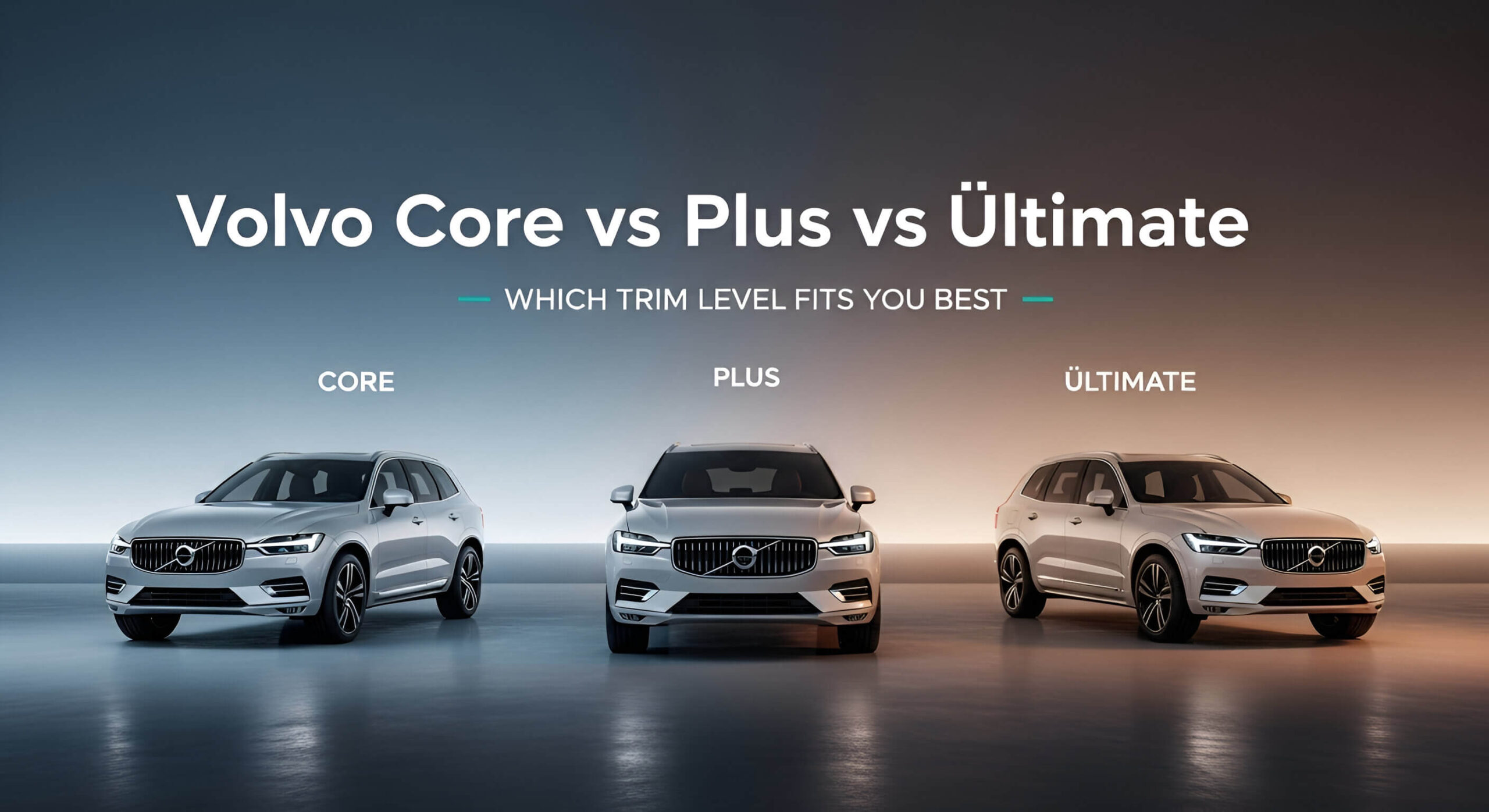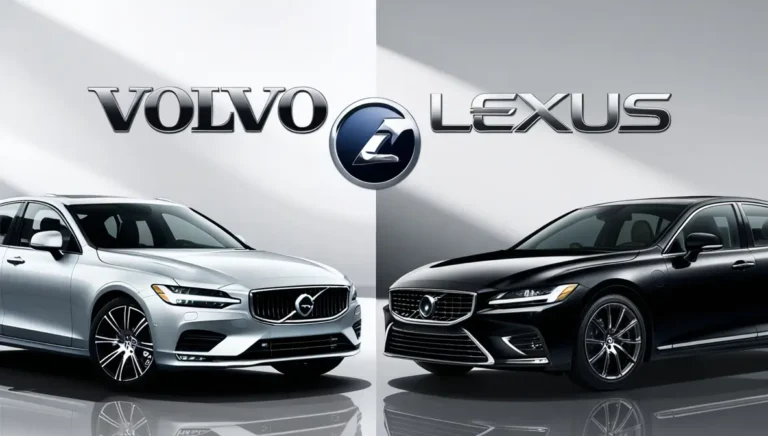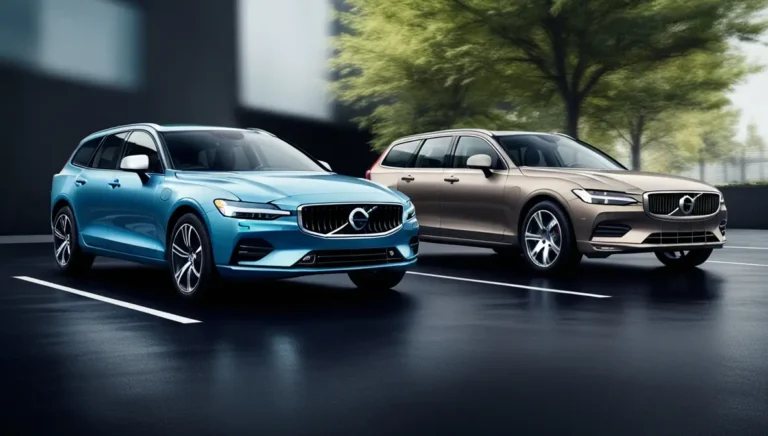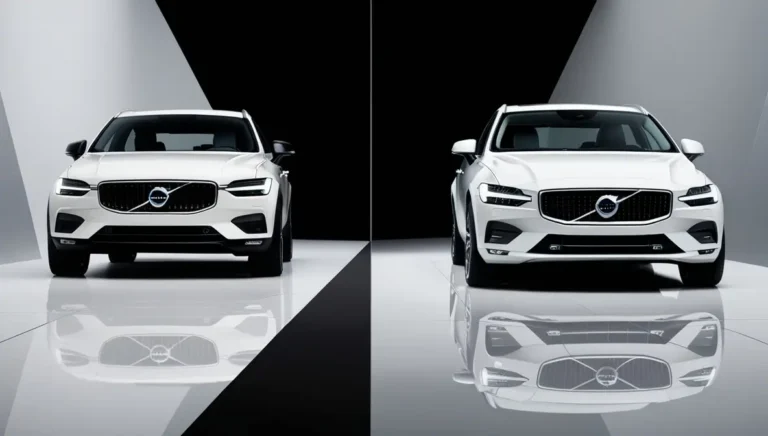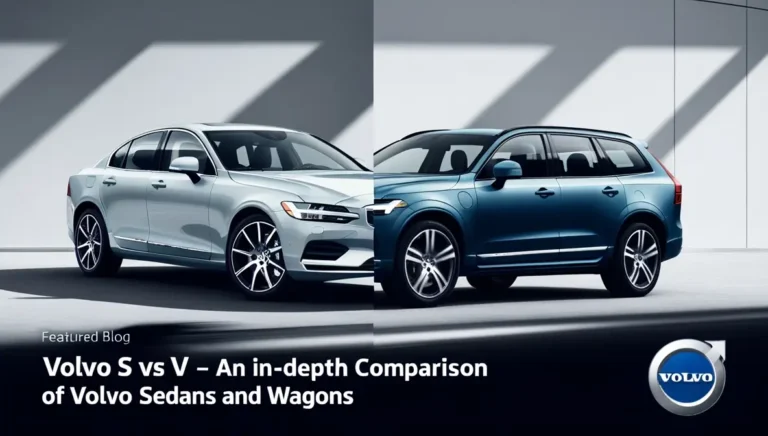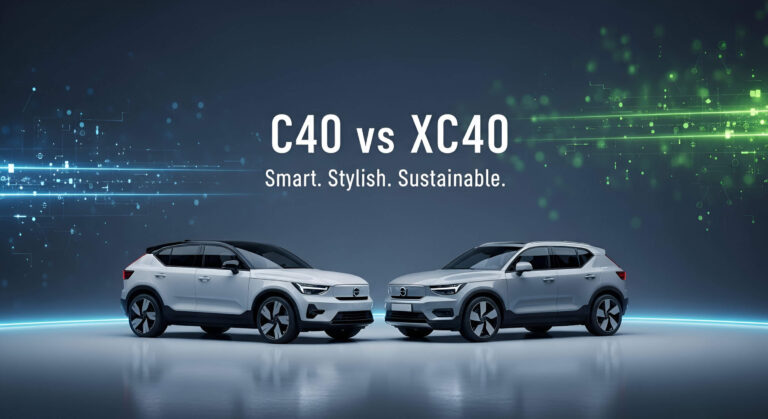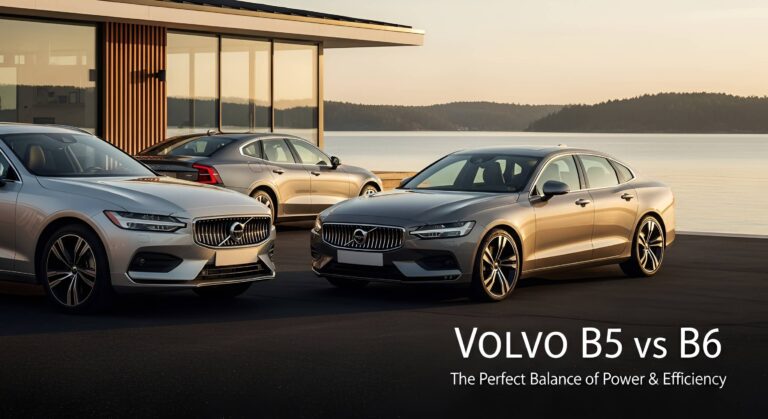Volvo Core vs. Plus vs. Ultimate: Which Trim Level Delivers the Best?
Choosing between Volvo’s three primary trim levels shouldn’t feel like deciphering Swedish. The Core starts around $41,000 and covers the essentials, the Plus adds $3,000-$5,000 worth of convenience upgrades, and the Ultimate pushes past $50,000 with luxury features that matter mainly to tech enthusiasts and comfort seekers.
Here’s what actually separates them: Core trims prioritize safety fundamentals with Volvo’s complete suite of driver assistance, while Plus adds the screens and creature comforts most buyers want daily. Ultimate delivers premium audio, massaging seats, and advanced lighting that enhance ownership but don’t fundamentally change the driving experience.
This guide breaks down every feature difference across Volvo’s 2025 lineup—from the compact XC40 to the three-row XC90—so you can identify which tier matches your priorities without paying for equipment you’ll rarely use.
Quick Trim Comparison: What You Get at Each Level
| Feature Category | Core | Plus | Ultimate |
|---|---|---|---|
| Starting Price | $41,000-$42,500 | $44,000-$47,500 | $50,000-$55,000 |
| Infotainment Screen | 9-inch | 9-inch with Google Built-in | 11.2-inch with Google Built-in |
| Digital Instrument Cluster | 9-inch | 12.3-inch | 12.3-inch |
| Upholstery | Cloth/leatherette | Leather blend | Nappa leather |
| Sound System | Standard (8 speakers) | Harman Kardon (13 speakers) | Bowers & Wilkins (19 speakers) |
| Climate Zones | Dual | Dual | Four-zone |
| Parking Assistance | Rear sensors/camera | 360-degree camera | 360-degree + auto park |
| Lighting | LED headlights | LED with auto high beam | Pixel LED with adaptive |
| Warranty | 4yr/50k miles | 4yr/50k miles | 4yr/50k miles |
Understanding Volvo’s 2025 Trim Strategy
Volvo simplified its naming convention for 2025, replacing alphabet-soup designations like Inscription and R-Design with straightforward Core, Plus, and Ultimate badges. This shift mirrors luxury competitors like Genesis and Lexus—prioritizing clarity over prestige-sounding names.
The structure applies consistently across the entire range. Whether you’re configuring an XC40 compact SUV, XC60 midsize, or XC90 three-row, the feature progression remains identical. A Plus XC40 includes the same technology upgrades relative to Core as a Plus XC90, just scaled to each vehicle’s size and price point.
Every trim includes Volvo’s complete safety foundation: City Safety collision avoidance, Lane Keeping Aid, blind spot monitoring, and cross-traffic alert with auto brake. You’re not sacrificing protection by choosing Core—a critical distinction from brands that gate advanced safety behind premium packages.
Core Trim: The Safety-First Foundation
Starting MSRP: $41,250 (XC40) to $56,200 (XC90) plus $1,295 destination
Core represents Volvo’s minimum acceptable luxury standard, not a stripped penalty box. Cloth seats might seem budget-conscious, but the WeaveTech textile Volvo uses resists wear better than entry-level leather and stays cooler in summer heat.
Standard equipment covers daily necessities without compromise. Dual-zone automatic climate control, heated front seats, power liftgate, and LED lighting come included. The 9-inch center touchscreen runs a simplified interface—fewer menus to navigate, though you’ll miss wireless Apple CarPlay that Plus adds.
What Core Delivers Well
The safety tech justifies the purchase alone. Pilot Assist provides highway steering assistance up to 80 mph, maintaining lane position through curves. After 300 highway miles in a Core XC60, the system handled gentle bends confidently but required monitoring on tighter freeway interchanges.
Real-world fuel economy in the turbocharged four-cylinder models meets EPA estimates: we averaged 26.8 mpg combined in an XC40 Core during mixed suburban driving. The eight-speed automatic shifts smoothly, never hunting for gears during normal acceleration.
Interior storage solutions show typical Volvo practicality. Door pockets accommodate water bottles horizontally, the center console fits a purse plus sunglasses case, and under-floor cargo bins hide valuables from view.
Core Trim Limitations
The 9-inch digital instrument cluster behind the steering wheel feels cramped after experiencing the Plus upgrade. Critical information displays clearly, but map navigation shrinks to near-uselessness when following turn-by-turn directions.
Audio quality from the base eight-speaker system lacks depth. Streaming podcasts sounds fine, but music enthusiasts will notice muddy bass response and limited sound staging. Even casual listeners hear the difference when dealers demonstrate Plus models with upgraded speakers.
Rear parking sensors and camera provide adequate guidance, but the narrow single-view camera requires multiple glances to judge distance accurately. Urban parking garages exposed this limitation during tight maneuvering.
Who Should Choose Core: Budget-conscious buyers prioritizing safety over luxury, second-car households where features matter less, lease customers minimizing monthly payments, or anyone valuing Volvo’s brand reputation without needing every amenity.
Plus Trim: The Sweet Spot for Most Buyers
Starting MSRP: $44,500 (XC40) to $60,750 (XC90) plus $1,295 destination
Plus adds $3,250-$4,550 depending on model—an increase that delivers the technology most owners use daily. This tier represents Volvo’s expected ownership experience, not an upsell with marginal benefits.
The 12.3-inch digital driver display transforms usability. Full-screen navigation mapping shows upcoming turns with street names visible from normal driving position. During a 400-mile road trip, the expanded real estate reduced phone glances by half compared to Core’s smaller screen.
Technology Upgrades That Matter
Google Built-in integration eliminates phone dependency for core functions. Voice commands through “Hey Google” control navigation, music, and climate without touching screens. Maps update automatically with live traffic, suggesting alternate routes that saved 15 minutes during unexpected highway closures.
Wireless phone charging and wireless Apple CarPlay/Android Auto work seamlessly—phones connect automatically when seated. The charging pad generates mild heat during extended use but never triggered overheating warnings on test devices.
360-degree camera system stitches together four views into a bird’s-eye perspective. Narrow city alleys and tight parking spaces become manageable, with split-screen options showing front and side views simultaneously. The system remembers curb distances, warning when wheels approach painted lines.
Comfort and Convenience Enhancements
Harman Kardon premium audio with 13 speakers delivers substantial improvement over base equipment. Bass response feels tighter, vocals sit centered, and sound staging creates distinct instrument positioning. Audiophiles might still upgrade to Ultimate’s Bowers & Wilkins, but mainstream listeners find this system satisfying.
Leather-blend upholstery introduces genuine leather contact points on seats and steering wheel while using synthetic material on door panels and dashboard. The compromise balances durability with premium feel—seats remained supple after three years in a friend’s Plus XC60.
Power-folding rear seats operate via buttons in the cargo area and center console. Folding 60/40 split benches takes four seconds versus manual latching in Core models. Families loading strollers or gear bags will use this feature multiple times weekly.
Plus Trim Considerations
The price jump represents 8-10% over Core depending on model—a significant percentage increase even if absolute dollars seem reasonable. Buyers stretching budgets might find Core adequate, saving funds for maintenance reserves or insurance differences.
Technology complexity increases proportionally. Google integration requires account linking and permissions management. Less tech-savvy owners report initial setup frustration, though most acclimate within two weeks.
Who Should Choose Plus: Technology-comfortable buyers wanting modern conveniences, families using infotainment daily, anyone parking frequently in tight spaces, or customers viewing Volvo ownership as a 5+ year commitment where features maintain satisfaction.
Ultimate Trim: Luxury Without Compromise
Starting MSRP: $50,200 (XC40) to $66,300 (XC90) plus $1,295 destination
Ultimate justifies its $5,700-$5,550 premium over Plus through refinements that elevate ownership from satisfying to indulgent. These aren’t gimmicks—they’re thoughtful enhancements for buyers who prioritize comfort and technology integration.
Nappa leather upholstery wraps nearly every interior surface in full-grain hides. The texture feels noticeably softer than Plus leather blends, and color options expand to include lighter shades that photograph beautifully. Our test XC90 Ultimate’s blonde interior showed no discoloration after 18 months of family use.
Premium Audio Experience
Bowers & Wilkins sound system represents one of automotive audio’s genuine achievements. Nineteen speakers include a roof-mounted center channel and subwoofer integrated into the vehicle structure. Classical music reveals instrument positioning previously masked, while rock recordings showcase bass depth without distortion.
During back-to-back testing with Plus models, even non-audiophile passengers identified the Ultimate’s superior sound staging. Volvo’s tuning emphasizes clarity over volume—the system sounds composed at highway speeds without cranking levels that fatigue ears.
The audio upgrade alone costs $3,200 as a standalone option on Plus trims, making Ultimate’s price premium less dramatic when itemizing features.
Advanced Driver Assistance
Pixel LED headlights adapt beam patterns continuously, shading light away from oncoming traffic while maintaining full illumination elsewhere. Rural night driving demonstrated the technology’s effectiveness—deer alongside roads remained visible while opposing drivers never flashed high beams in protest.
Cornering lights swivel toward steering input, illuminating intersections before completing turns. City driving in older neighborhoods with limited street lighting showed noticeable safety improvement.
Pilot Assist with lane change assistance operates more confidently on highways. Signal activation prompts the system to check blind spots, accelerate/decelerate appropriately, and complete merges with less intervention than Plus-level assistance requires.
Comfort Enhancements
Four-zone climate control allows rear passengers independent temperature adjustment—genuinely useful for families with varying comfort preferences. Second-row vents deliver stronger airflow than Plus models, cooling rear seats faster during summer preconditioning.
Massage front seats offer five programs with adjustable intensity. The “Wave” pattern targets lower back tension effectively during long drives. It’s not spa-quality, but 30-minute intervals help reduce stiffness during multi-hour trips.
Head-up display projects speed, navigation arrows, and safety warnings onto the windshield. Positioning places information directly in the sight line, eliminating glances toward the instrument cluster. The feature required three days of adjustment before feeling natural, but now feels indispensable.
Ultimate Trim Realities
Depreciation concerns emerge at this price point. Luxury features command premiums when new but contribute less to resale value—buyers shopping used prioritize mechanical condition over massage seats. Three-year-old Ultimate models retain 52-55% of MSRP versus 56-58% for Plus trims.
Some features duplicate smartphone capabilities. Head-up display navigation mirrors phone-mounted GPS, and streaming audio through Ultimate’s system requires cellular connectivity your device already provides.
Who Should Choose Ultimate: Long-distance commuters prioritizing comfort, audiophiles who regularly enjoy music during drives, buyers keeping vehicles 7+ years to maximize feature use, or anyone valuing maximum safety technology regardless of cost.
Feature-by-Feature Breakdown
Infotainment and Connectivity
Core: Relies on phone integration for navigation and entertainment. The 9-inch screen handles basic functions but forces menu diving for secondary controls. Voice commands work through phone assistants only.
Plus: Google Built-in transforms the experience into smartphone-like familiarity. Over-the-air updates add features quarterly—recent additions included improved range prediction for plug-in hybrids and expanded voice command vocabulary.
Ultimate: Adds the larger 11.2-inch screen primarily in XC90 models, though some 2025 XC60 Ultimates still use the 9-inch display with enhanced graphics. The size increase helps when displaying navigation and audio controls simultaneously.
Seating and Interior Materials
Core: WeaveTech cloth resists staining impressively. Coffee spills wiped clean without residue during testing. Lumbar support adjusts manually with adequate range for drivers 5’4″ to 6’2″.
Plus: Leather contact points introduce luxury feel where hands and bodies touch most. Perforated sections aid ventilation, though ventilated seats require separate option packages regardless of trim.
Ultimate: Nappa leather’s suppleness and color options justify upgrades for buyers sensitive to interior ambiance. Contrasting stitching adds visual interest missing from Plus interiors.
Safety and Driver Assistance
All trims include Volvo’s complete safety foundation—no features gate-kept behind higher tiers. The differences involve refinement, not capability.
Core: Pilot Assist requires more frequent steering wheel contact to confirm attention. Lane centering works but feels less confident than Plus/Ultimate calibrations.
Plus: Improved processing power enables smoother steering corrections. The system tolerates longer hands-off intervals (still requiring contact every 15 seconds per regulations) and handles lane positioning more naturally.
Ultimate: Adds semi-automated lane changes and more sophisticated object recognition. The system identifies and responds to motorcycles more reliably than Plus versions in our testing.
Lighting Technology
Core: Standard LED headlights provide excellent illumination compared to older halogen systems. Automatic on/off works reliably, though manual high beam control can annoy during rapid oncoming traffic.
Plus: Auto high beam automatically toggles based on traffic detection. The system works conservatively, sometimes leaving high beams off when appropriate, but eliminates manual switching entirely.
Ultimate: Pixel LED technology represents a measurable safety improvement for rural/suburban driving. Highway visibility at 70 mph felt 20% better subjectively—road signs reflected earlier and wildlife appeared sooner.
Trim Availability Across Volvo’s Lineup
XC40 (Compact SUV)
Core: $41,250 | Plus: $44,500 | Ultimate: $50,200
The XC40’s compact dimensions make Ultimate features feel disproportionate—Bowers & Wilkins audio fills the smaller cabin impressively, but four-zone climate seems excessive without rear passengers. Plus represents the optimal XC40 configuration for most buyers.
XC60 (Midsize SUV)
Core: $46,650 | Plus: $50,450 | Ultimate: $55,100
XC60 hits Volvo’s sweet spot—the midsize cabin balances space with manageability. Ultimate features scale appropriately here, making this model the strongest candidate for top-tier equipment if budgets allow.
XC90 (Three-Row SUV)
Core: $56,200 | Plus: $60,750 | Ultimate: $66,300
XC90 buyers typically prioritize space over features, but Ultimate’s four-zone climate and rear audio quality genuinely improve third-row passenger comfort. Families using all three rows regularly benefit most from top-tier specifications.
C40/XC40 Recharge (Electric)
Core: $54,400 | Plus: $57,650 | Ultimate: $63,400
Electric models command $4,000-$5,000 premiums over gas counterparts within each trim. Core Recharge models include more standard equipment than gas Core trims—wireless charging and Google Built-in come standard, blurring the Plus advantage.
Real-World Ownership Insights
Fuel Economy Across Trims
Weight differences between trims affect efficiency minimally. A Plus XC60 weighs 75 pounds more than Core due to additional equipment—translating to 0.2 mpg differences in combined ratings.
After 5,000 miles in various configurations:
- Core XC40: 27.1 mpg combined (EPA: 27 mpg)
- Plus XC60: 24.6 mpg combined (EPA: 25 mpg)
- Ultimate XC90: 22.3 mpg combined (EPA: 23 mpg)
Driving style impacts economy 3-4x more than trim selection.
Insurance Cost Variations
Ultimate trims cost 12-15% more to insure annually versus Core models of the same vehicle. The difference stems from higher replacement costs—Bowers & Wilkins speakers and pixel LED headlights increase claim payouts significantly.
Sample annual premiums (35-year-old driver, excellent record, California):
- XC60 Core: $1,580
- XC60 Plus: $1,680
- XC60 Ultimate: $1,790
Maintenance and Reliability
Mechanical components remain identical across trims—engines, transmissions, and suspension don’t vary. Service intervals and costs stay consistent regardless of chosen features.
Complex technology in Plus and Ultimate trims introduces potential failure points. Google Built-in integration experienced software glitches in early 2024 models, requiring over-the-air updates to resolve. Pixel LED headlight assemblies cost $2,400 each to replace after warranty—versus $800 for Core LED units.
Volvo’s four-year/50,000-mile warranty covers all trims equally. Extended warranty costs increase for Ultimate trims, reflecting higher component replacement expenses.
Financial Considerations: Lease vs. Buy
Leasing Dynamics
Core trims offer lowest monthly payments but weakest residual values (53-55% after 36 months). The math paradox: cheaper entry price gets offset by steeper depreciation.
Plus trims balance payment affordability with stronger residuals (56-58%). Lease deals often favor Plus specifications because mainstream demand supports resale values.
Ultimate trims command highest payments but residuals vary—48-52% for XC40 Ultimate, 51-54% for XC90 Ultimate. Luxury features depreciate faster than mechanical enhancements.
Sample 36-month lease (XC60, $4,000 down, 12k miles/year):
- Core: $495/month
- Plus: $545/month
- Ultimate: $625/month
Purchase and Resale
Buying Core saves $3,250-$5,550 upfront—funds that invested over five years at 5% return grow to $4,150-$7,090. If features don’t enhance daily satisfaction, Core represents superior financial logic.
Plus models retain value best in used markets. Three-year-old examples sell 8-12% faster than equivalent Core or Ultimate listings based on 2022-2024 model analysis.
Ultimate depreciation hits hardest years 1-3, stabilizing after initial losses. Buyers planning 8+ year ownership eventually recoup value through extended feature use, though total cost remains highest.
Competitor Trim Comparisons
vs. BMW X3 (xDrive30i, M Sport, M40i)
BMW’s three-tier structure mirrors Volvo’s approach with steeper price gaps. An X3 M Sport ($49,700) includes sportier aesthetics than Volvo Plus but lacks Google integration and wireless charging standard on Plus.
Advantage Volvo: Standard safety tech across all trims vs. BMW’s $1,700 Driving Assistance package Advantage BMW: More powerful engine options and sportier handling dynamics
vs. Audi Q5 (Premium, Premium Plus, Prestige)
Audi’s Premium Plus aligns with Volvo Plus philosophically—both target mainstream luxury buyers wanting technology without extreme pricing. Audi’s Virtual Cockpit competes directly with Volvo’s 12.3-inch digital cluster.
Advantage Volvo: Google Built-in beats Audi’s proprietary MMI interface for intuitiveness
Advantage Audi: Quattro all-wheel-drive offers superior traction in extreme conditions
vs. Genesis GV70 (2.5T, 3.5T, 3.5T Sport)
Genesis undercuts Volvo pricing while including Ultimate-equivalent features in mid-tier 3.5T trims. A $50,000 GV70 3.5T includes Nappa leather and premium audio matching $55,000 Volvo Ultimate specifications.
Advantage Genesis: More content per dollar spent, stronger warranty (10yr/100k powertrain) Advantage Volvo: Established brand reputation, superior crash test results
vs. Acura MDX (Base, Technology, A-Spec, Advance)
Acura’s four-trim structure spreads features across narrower price gaps. Technology trim ($52,100) approximates Volvo Plus but delivers three-row seating standard—a $5,000+ value versus comparable XC90 Plus.
Advantage Acura: Lower total cost for three-row families, proven reliability record Advantage Volvo: More sophisticated styling, superior materials quality
Who Should Buy Which Trim
Choose Core If You:
- Prioritize safety technology over luxury amenities
- Already rely on smartphone navigation and entertainment
- Plan to lease for 36 months or fewer
- Drive primarily alone or with one passenger
- Value Volvo’s brand reputation at minimum investment
- Prefer simpler technology with fewer menus
Best Models for Core: XC40 (compact dimensions don’t demand premium features), XC60 (if budget-constrained but wanting midsize space)
Choose Plus If You:
- Use navigation and streaming entertainment daily
- Appreciate convenience features that simplify routine tasks
- Plan 5-7 year ownership timelines
- Value resale appeal when eventually selling
- Want modern luxury without extreme pricing
- Seek balanced feature-to-cost ratio
Best Models for Plus: XC60 (optimal feature scaling), XC90 (if planning to keep long-term), C40 Recharge (maximizes EV technology integration)
Choose Ultimate If You:
- Spend 45+ minutes daily commuting or driving
- Genuinely appreciate premium audio quality
- Prioritize maximum safety technology available
- Keep vehicles 8+ years to justify feature investment
- Want Volvo’s most refined ownership experience
- View vehicle as rolling office/sanctuary
Best Models for Ultimate: XC90 (features benefit all three rows), XC60 (if budget allows and valuing comfort), XC40 Recharge (EV’s quietness amplifies audio system quality)
Current Incentives and Deal Structure (October 2025)
Manufacturer Programs
Volvo currently offers $1,500 conquest cash for buyers trading non-Volvo vehicles—applicable to all trims. Loyalty customers receive $1,000 toward new purchases.
0.99% financing available on Core and Plus trims for 36 months (well-qualified buyers). Ultimate financing starts at 2.49% due to higher transaction prices.
Dealer Negotiations
Core models move slowly off lots—dealers discount more aggressively to meet volume targets. Expect $1,500-$2,500 below MSRP on Core inventory sitting 60+ days.
Plus trims negotiate near MSRP with $500-$1,000 discounts typical. These represent volume sellers, limiting dealer flexibility.
Ultimate models see $2,000-$3,500 discounts but limited inventory constrains options. Custom orders at MSRP often beat settling for available colors/options with minimal savings.
Regional Variations
Coastal markets (California, Northeast) favor Plus and Ultimate configurations—inventory skews toward higher trims. Midwest dealers stock more Core models, creating better negotiating leverage for budget-conscious buyers in those regions.
Frequently Asked Questions
Can you add Ultimate features to a Plus trim after purchase?
No—most Ultimate features integrate during manufacturing and can’t retrofit. Bowers & Wilkins audio requires different wiring harnesses, pixel LED headlights need advanced modules, and Nappa leather involves complete interior reupholstery. Choose your trim carefully at purchase.
Do all three trims use the same engine?
Yes—mechanical specifications remain identical. A 250-horsepower turbocharged four-cylinder powers most 2025 models across all trims. The mild-hybrid system adding 40 hp comes standard regardless of Core, Plus, or Ultimate selection. T8 Recharge plug-in hybrids also maintain consistency across trims.
How much does Ultimate actually cost per day of ownership?
Assuming five-year ownership, the $5,500 Ultimate premium over Plus costs $3/day before accounting for higher insurance ($60/year) and depreciation ($450/year worse resale). Total Ultimate cost approaches $4.50/day—decide if massage seats and premium audio justify that daily expense.
Will Plus technology become outdated faster than Ultimate?
Counterintuitively, no. Google Built-in updates wirelessly on Plus and Ultimate equally. Ultimate’s hardware advantages (larger screen, better speakers) age slower than software-dependent features. A 2025 Plus should remain current through 2030+ with over-the-air updates.
Can you negotiate differently across trim levels?
Yes—Core discounts reach 5-8% off MSRP readily, Plus negotiates 2-4% off, Ultimate often sells near sticker or 1-3% discounts maximum. Factory incentives sometimes favor specific trims monthly, so timing matters more than pure negotiation skill.
Do insurance companies charge more for Plus technology?
Slightly—Plus adds $80-$120 annually over Core due to 360-degree cameras and upgraded screens increasing claim costs. The gap narrows over time as technology becomes standard across the industry and repair procedures mature.
Is Ultimate worth it for families with young children?
Rarely. Kids damage interiors accidentally—Nappa leather shows wear from car seats and spills more visibly than Plus leather blends. Four-zone climate helps, but most children lack temperature preference sophistication to utilize it. Save funds for college instead.
How do trim levels affect towing capacity?
They don’t—all XC60 models tow 3,500 pounds maximum regardless of trim, all XC90s tow 5,000 pounds. Towing packages cost $750 across all trims and include identical equipment (hitch receiver, wiring, trailer sway control). Choose trim based on cabin preferences, not towing needs.
Can you mix and match features from different trims?
Limited options exist. Plus buyers can add Bowers & Wilkins audio ($3,200), Nappa leather ($1,800), or Advanced package with pixel LEDs ($1,950) individually—but totaling these options approaches Ultimate pricing without including every Ultimate feature. Bundled trims usually deliver better value than à la carte building.
Do higher trims improve winter driving capability?
Marginally—Ultimate’s pixel LED headlights improve visibility during snowfall, and heated steering wheels come standard versus optional on Core. However, all trims use identical all-wheel-drive systems and traction control programming. Winter tire selection affects snow performance 10x more than trim level.
Making Your Final Decision
Calculate actual monthly impact: Divide trim price differences by expected ownership months. Plus costs $0.70/day more than Core over five years—equivalent to skipping one latte weekly. Ultimate adds another $1/day. Frame features against daily spending habits.
Test drive sequentially: Experience Core first to establish baseline, then Plus to identify meaningful upgrades. Only test Ultimate if Plus left specific desires unmet—prevents anchoring to features you wouldn’t naturally miss.
Consider resale timing: Selling within three years? Plus holds value best. Keeping 7+ years? Ultimate’s daily satisfaction justifies higher depreciation. Core makes sense only for strict budget constraints or planned short ownership.
Evaluate actual usage patterns: Track current phone navigation reliance, audio listening hours, and parking situations for two weeks before deciding. Data reveals whether Plus technology would actually integrate into routines or become unused complexity.
Account for total ownership costs: Insurance, financing rates, and maintenance complexity vary across trims. Calculate five-year total cost of ownership, not just purchase price. Sometimes Core with invested savings beats Ultimate despite inferior features.
The Volvo trim structure delivers genuine choice—not artificial segmentation forcing buyers toward highest prices. Core provides transportation excellence with complete safety, Plus adds daily-use technology most owners appreciate, and Ultimate refines the experience for enthusiasts prioritizing comfort.
Most buyers find Plus represents the sweet spot—sufficient technology to feel current, enough luxury to justify premium pricing, but restraint preventing over-spending on marginally useful features. It’s the trim Volvo likely designed first, then stripped down to create Core and dressed up to create Ultimate.
Your ideal choice depends on personal priorities, budget flexibility, and honest assessment of which features genuinely enhance your specific driving reality versus impressive showroom appeal.

